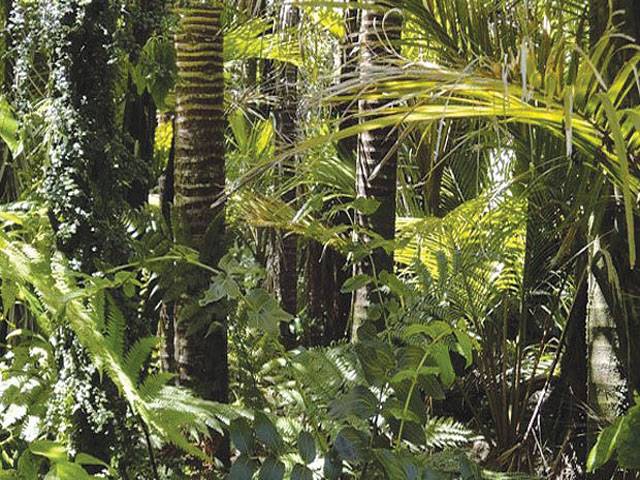TOME-ACU - The tall trees, animal cries and deep shadows would make you think you’re in Brazil’s Amazon jungle, in fact the leafy paradise Tome-Acu is the work of farmers. Switching off their chainsaws and planting new trees, Brazilian farmers like Michinori Konagano are turning their backs on Brazil’s old habits of treating the Amazon as nothing better than a limitless source of new land. And they’re not only making money but, by increasing stocks of carbon-storing trees, helping to curb the emissions responsible for global warming and what scientists say could be catastrophic global climate change. “When my father bought these lands in the 1960s, everyone would cut down jungle so they could plant peppers,” said Konagano, whose Japanese immigrant parents settled in the Amazonian state of Para.
This was not just a local method. To cut down the Amazon was considered practically a duty under the military dictatorship of the period. “A land without people for people without land,” the slogan went.
Para became a champion of deforestation. In 2003 and 2004 alone, 3,088 square miles (8,000 square km) of forest vanished, about the area of the island of Puerto Rico. The hardwood went to feed international demand and the empty land was then planted with cash crops.
Brazil has since made big gains in slowing deforestation, even if it is far from over. In 2013-2014, another 1,850 square miles (4,800 square kilometers) of the Amazon were destroyed, according to the National Institute for Space Research. In Tome-Acu, bright green pepper plantations were the main replacement for forest. But a sickness in the crop and a fall in export prices forced a rethink, says Kozaburo Minishita, another producer with the Tome-Acu cooperative.
“We started planting cocoa and that needs shade,” he recalled. “So we started planting trees that grow taller.” Minishita’s next idea was to plant acai, whose berries are popular as antioxidants and the basis for health drinks. Pupunheira palm trees, whose heart of palm is a delicacy in Brazil, came next, along with soaring parica trees, which have the added benefit of being especially good at replenishing soil nutrients.
Bit by bit, he and other farmers learned to mix and match, ensuring year-round multiple harvests, from bananas to Brazil nuts, rather than the old single-crop model.
“We imitated nature and ended up spending far less on pesticides,” Claudio Takahiro, another cooperative member said. “The dead leafs fertilize and protect the soil,” he said. “Biodiversity has also brought back insects and birds and they get rid of the parasites.”
The 150 members of the Tome-Acu cooperative have 7,000 hectares under agro-forestry, with turnover of some $17.5 million from sales of fresh fruit, jams, pulp and oils for cosmetic use. But what might be called “working jungles” are also carbon sinks. The trees perform a vital role by absorbing harmful carbon dioxide, a root cause of rising global temperatures, instead of letting it rise into the atmosphere.
In the neighboring Santa Luzia cooperative, 23 families are working in agro-forestry. Birds and animals have returned to their lands, streams have recovered their water levels and there are cooling shadows where before there was only scorching sun. “Climate change is linked with the fact that we cut down trees. Replanting them and making money at the same time as protecting the environment makes me happy,” said Marcos da Silva, a farm technician.
Thursday, April 18, 2024
Brazilian farmers learn to love Amazon’s trees again

3:56 PM | March 28, 2024
4:14 PM | March 23, 2024
Stefanos Tsitsipas advances in Barcelona
4:19 PM | April 18, 2024
Met Office predicts more rains across country till April 29
2:51 PM | April 18, 2024
Punjab changes school timings for summer season
1:55 PM | April 18, 2024
Enemies of Pakistan are unable to digest investment in the country: Ataullah Tarar
1:29 PM | April 18, 2024
IHC restores Bushra Bibi's appeal for shifting to Adiala Jail from Bani Gala
1:24 PM | April 18, 2024
Hepatitis Challenge
April 18, 2024
IMF Predictions
April 18, 2024
Wheat War
April 18, 2024
Rail Revival
April 17, 2024
Addressing Climate Change
April 17, 2024
Justice denied
April 18, 2024
AI dilemmas unveiled
April 18, 2024
Tax tangle
April 18, 2024
Workforce inequality
April 17, 2024
New partnerships
April 17, 2024
ePaper - Nawaiwaqt
Advertisement
Nawaiwaqt Group | Copyright © 2024





